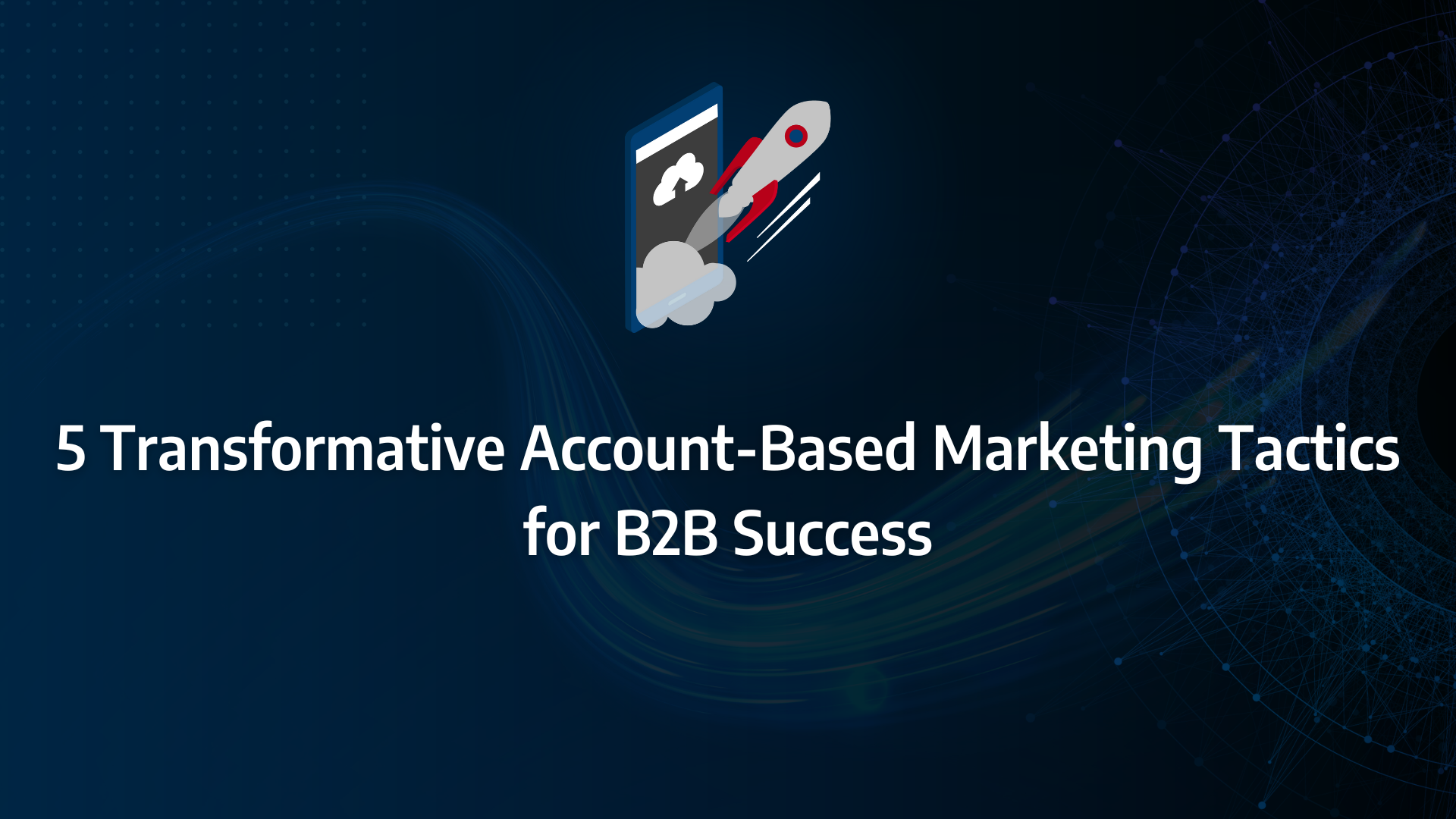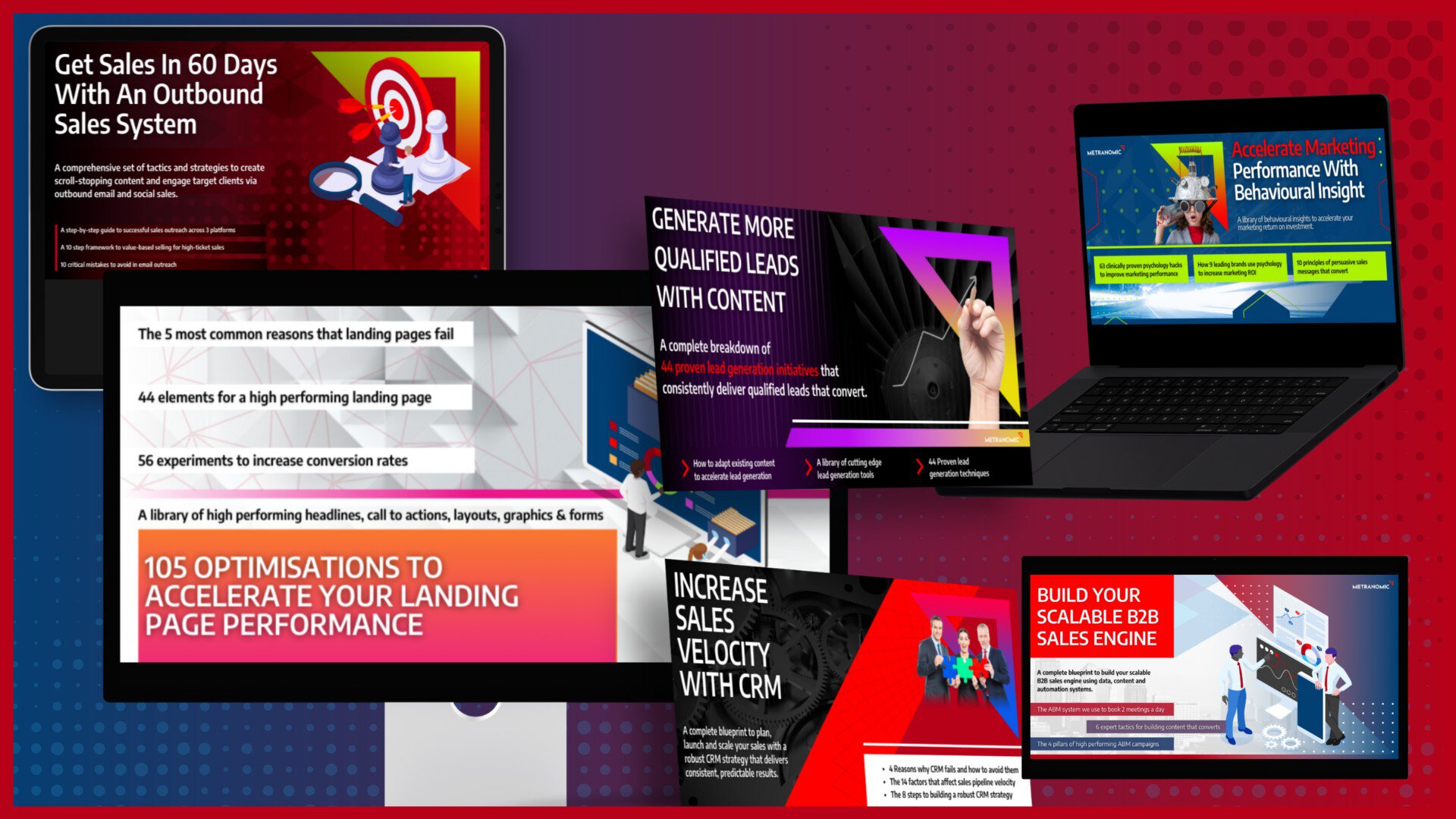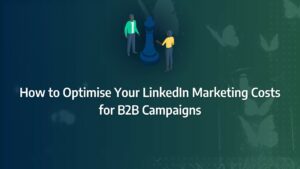Reaching and engaging high-value accounts is no longer optional—it’s essential for sustainable growth. Yet, many businesses struggle to break through the noise and connect with their most important prospects. This is where Account-Based Marketing (ABM) comes into play, offering a laser-focused approach that aligns marketing and sales efforts to target and convert these key accounts.
In this blog post, we’ll explore five transformative ABM tactics that can elevate your marketing strategy. From personalised content development to multi-channel campaigns, these tactics are designed to engage your target accounts more effectively, driving greater ROI and long-term success.
- Personalisation is Key: Tailor your content to the specific needs and pain points of individual accounts to increase engagement and conversion rates.
- Leverage Multi-Channel Campaigns: Use a coordinated approach across multiple platforms to maintain consistent communication with target accounts and reinforce your messaging.
- Utilise Data-Driven Insights: Continuously analyse data to refine your ABM strategies, ensuring that your efforts are targeted and effective.
- Align Sales and Marketing Teams: Foster collaboration between sales and marketing to ensure cohesive execution of ABM tactics, leading to more efficient account management.
- Focus on Long-Term Relationship Building: Engage with key accounts consistently, offering ongoing value to build trust and loyalty, which can lead to repeat business.
What is an account-based marketing strategy?
Account-Based Marketing (ABM) is a highly targeted growth strategy where marketing and sales collaborate to engage key accounts that present significant revenue potential. This approach relies on B2B data to craft bespoke marketing campaigns and personalised buyer experiences for each targeted account.
Rather than addressing a broad spectrum of prospects or organisations grouped by common characteristics, ABM focuses on a more selective list. This list comprises high-value accounts, with marketing efforts tailored precisely to meet the specific needs and preferences of each target.
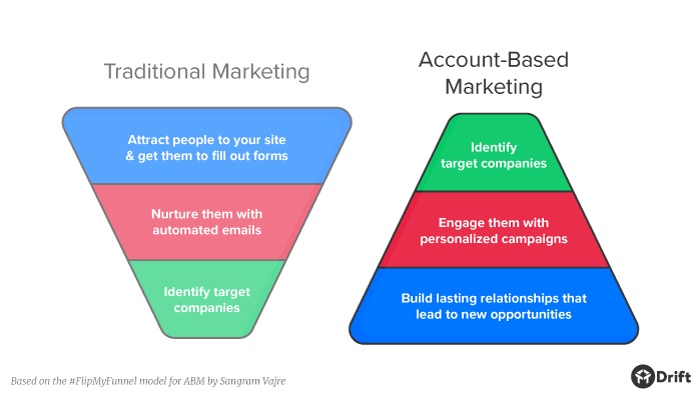
The Benefits of an Account-Based Marketing Strategy
Account-Based Marketing has become increasingly popular, especially among B2B companies targeting large enterprises or government bodies. For businesses that deal with lengthy sales cycles and high-value deals, ABM marketing tactics offer clear advantages over more traditional approaches:
- Personalised Marketing Approach
In today’s marketplace, personalisation is key. McKinsey research highlights that 71% of consumers expect personalised interactions, and when this doesn’t happen, 76% report frustration. While these figures relate to general consumers, expectations are even higher among executives and decision-makers.
ABM directly addresses this need for personalisation. Instead of casting a wide net, marketers develop tailored messaging for specific accounts, using insights into both the company and individual decision-makers. This level of personalisation significantly enhances the customer experience, fostering smoother transitions from marketing-qualified leads (MQLs) to closed-won deals. - Sales and Marketing Alignment
One of the core strengths of ABM is how it fosters alignment between sales and marketing teams. Both functions work together to identify target accounts, create customised campaigns, and stay coordinated throughout the buyer journey.
This collaboration reduces internal friction, ensures efficient resource use, and makes it easier to demonstrate how marketing efforts contribute directly to securing high-value accounts. - Shorter Sales Cycles
In many organisations, major purchasing decisions involve multiple stakeholders, which can prolong the sales process. Typically, the decision-making journey begins at a lower level within the company and gradually advances to senior leaders, creating delays.
However, by employing targeted account-based marketing tactics, businesses can nurture multiple stakeholders simultaneously, significantly reducing the length of the sales cycle. A report from Cyance found that companies implementing ABM saw a 30% reduction in ‘time to opportunity’ and shortened the ‘opportunity to close’ window by a month. Additionally, they experienced an 8-10% increase in revenue as a direct result.
What Matters Most?
Clearly defining ideal customer profiles typically fosters better alignment between marketing and sales teams, enhancing overall effectiveness. Clients often discover that integrating account-based marketing throughout the entire customer journey creates a seamless experience, significantly impacting conversion rates. Moreover, by focusing on engagement metrics rather than merely tracking leads, you can cultivate meaningful interactions with target accounts, ultimately driving better results and deeper relationships.Get In Touch
What are account-based marketing tactics?
The Three Pillars of ABM
When crafting a successful account-based marketing strategy, three essential pillars form the foundation of ABM marketing tactics. Each pillar plays a crucial role in ensuring the strategy is targeted, personalised, and sustained over time.
1. Targeting
Account-based marketing completely redefines the traditional marketing funnel. Rather than casting a broad net and hoping to capture leads, ABM is laser-focused on identifying and engaging specific high-value accounts that are most likely to convert.
To achieve this, a deep understanding of your Ideal Customer Profile (ICP) is essential. This profile acts as the cornerstone of your targeting strategy, ensuring that your marketing and sales teams are aligned in identifying the accounts that are worth pursuing. It’s vital to collaborate closely with your sales team, as they bring invaluable insights into which accounts are truly a good fit.
In this stage, advanced data analytics and predictive modelling become invaluable tools. By filtering accounts based on criteria such as industry, company size, and past behaviour, you can zero in on the most promising prospects. This precise approach to targeting increases your chances of success, enabling you to focus your resources on accounts with the highest potential.
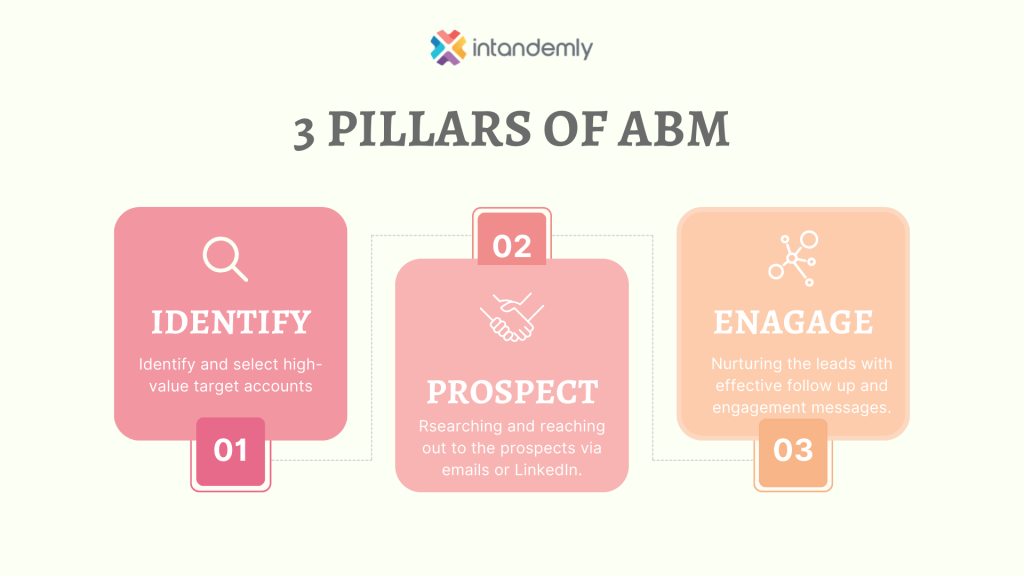
2. Content
Once your target accounts are identified, the second pillar—content—comes into play. In ABM, content personalisation is paramount. It’s not enough to simply address prospects by name; your content needs to deeply resonate with the unique challenges, pain points, and goals of each account.
While developing this personalised content can be resource-intensive, the return on investment is significant. Whether it’s tailored emails, customised case studies, account-specific webinars, or even one-on-one interactions, creating highly relevant content shows that you genuinely understand your target’s needs. This level of engagement increases the likelihood of capturing their attention and fostering a meaningful connection.
Personalised content is a core component of effective account-based marketing tactics, as it builds trust and demonstrates your ability to offer real value to each account. The time invested in crafting this content pays off in the form of stronger relationships and higher conversion rates.
Source: Hubspot
3. Continuity
The third and final pillar of ABM is continuity. Unlike some marketing approaches that may focus on short-term wins, ABM is all about nurturing long-term relationships with your target accounts. It requires sustained and coordinated efforts from both marketing and sales over time.
Continuity involves staying relevant to your accounts, even when they’re not immediately ready to buy. This can be achieved through regular touchpoints, personalised follow-ups, and ongoing engagement that consistently keeps your brand top of mind. Building trust and credibility doesn’t happen overnight, but by maintaining continuous contact, your accounts will see your brand as a dependable partner capable of addressing their evolving needs.
In the long run, continuity ensures that your efforts don’t just end at the point of sale. Instead, you remain an active, valued partner throughout the customer journey, making it far more likely that you’ll see repeated business and long-term success.
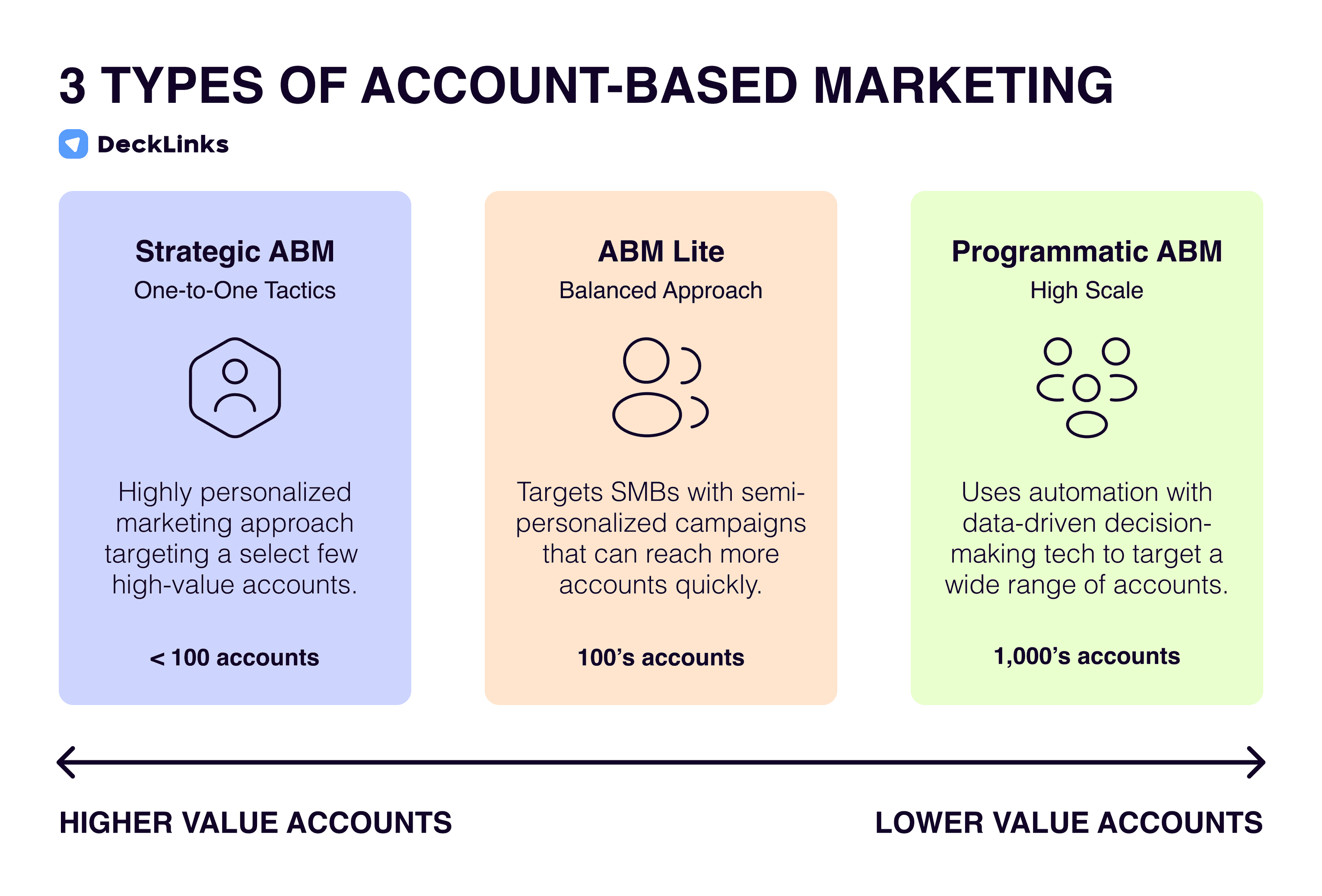
Specific Tactics for Account-Based Marketing Success
1. Develop Prospect-Specific Offers
The cornerstone of account-based marketing (ABM) is relevance and personalisation. Since ABM programmes typically focus on a small, select group of high-value accounts, the success of these campaigns relies on delivering high conversion rates. One of the most effective account-based marketing tactics is to tailor content marketing efforts by developing offers specifically designed for each target account.
For example, creating a personalised report with insights tailored to a potential buyer’s business needs can significantly increase engagement. Prospects are far more likely to open a report that directly addresses their specific challenges and offers valuable, customised information.
2. Create Offers Designed to Secure Meetings
Nearly all marketers (99.9%) use offers designed to generate leads through webinars, white papers, and similar content. These offers play a critical role in helping sales teams secure meetings with key prospects.
For instance, a social analytics company might offer an hour-long, live research session that analyses a business’s social media performance compared to its competitors. Other effective offers could include free technology audits or security assessments. Such offers provide tangible value while opening the door for meaningful engagement.
3. Leverage Retargeting to Maintain Brand Presence
Retargeting is a highly effective account-based marketing tactic, especially when keeping your brand in front of key accounts as they consume online content. Innovative retargeting strategies allow marketers to engage target accounts repeatedly, ensuring your message stays top-of-mind.
For example, Demandbase offers an account-based targeting solution that identifies target accounts by their IP addresses as they browse the web. When these accounts visit sites within Demandbase’s advertising network, they are shown highly relevant ads from your brand. Other B2B-focused retargeting platforms include Bizo and Retargeter, both of which specialise in keeping brands in front of high-value accounts.
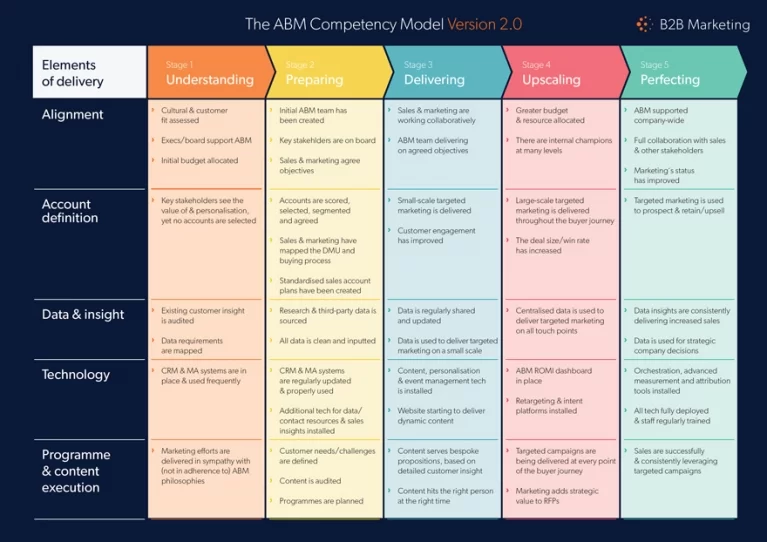
4. Personalise the Account Experience on Your Website
Given the precision of ABM, it’s crucial that account-based marketing programmes deliver high conversion rates. Personalising the website experience is one of the most effective tactics to achieve this. Marketers can create account-specific landing pages that display custom content, including tailored copy, images, offers, and forms based on the specific person or account visiting the page.
While personalisation tactics can include addressing visitors by name on landing pages, it’s essential to exercise caution, as overly personalised elements can sometimes feel intrusive. Instead, focus on delivering relevant content that speaks to the needs of that specific account.
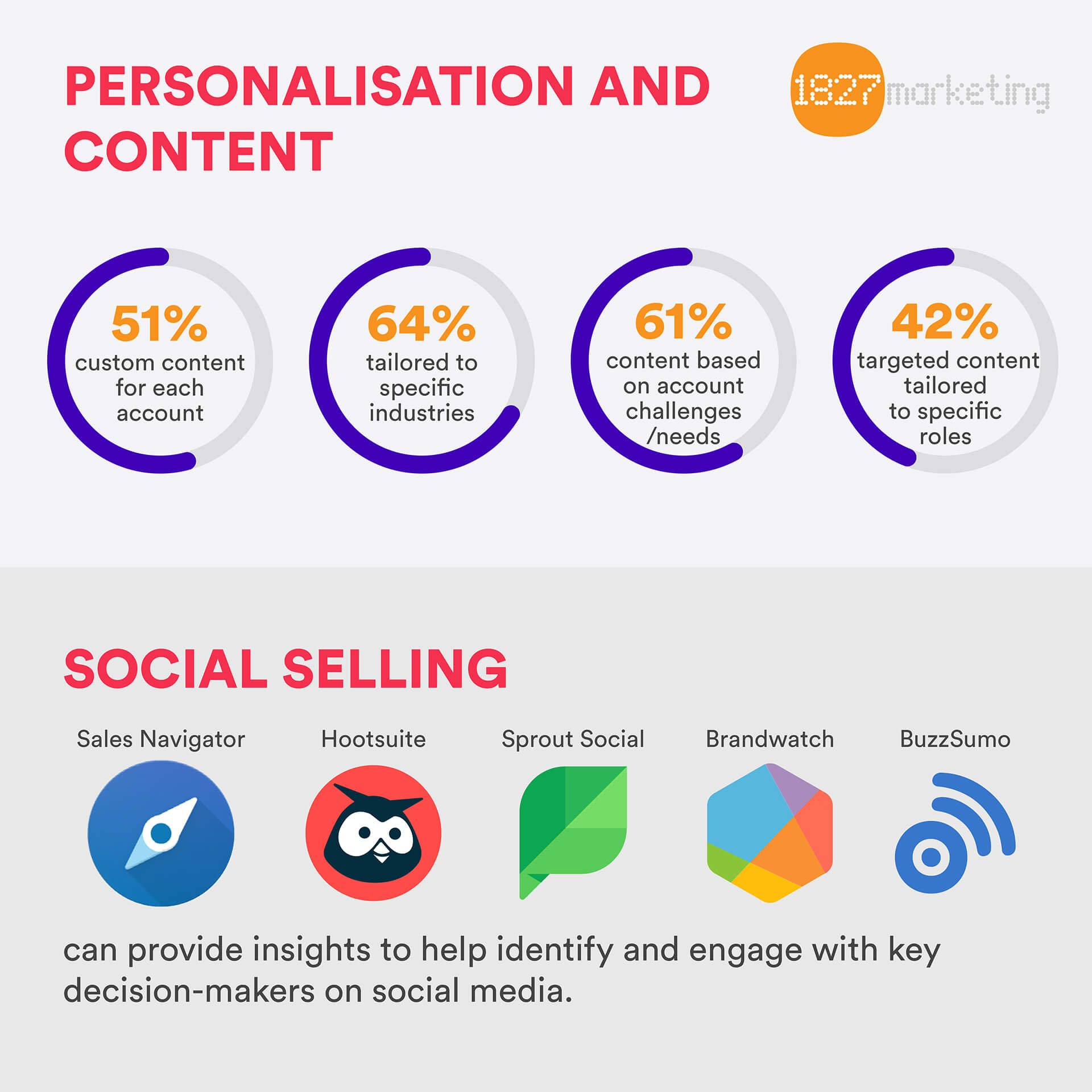
5. Customise Customer Testimonials by Account Tier
Another powerful way to personalise account-based marketing is by customising customer testimonials to make them relevant to target accounts. Consider organising testimonials into tiers, starting with broad-use cases that apply to a wide audience. Then, develop more targeted customer stories tailored to specific market segments or key accounts.
While it may not be feasible to create high-production videos for every testimonial, there are cost-effective ways to add dynamic content. Encourage your customers to record their own video testimonials, which you can use alongside written stories to create a more engaging narrative without breaking the budget.
6. Build a List of Role-Based Contacts
In ABM, precision is key—not only in messaging but also in targeting the right individuals. Vendors can assist in creating role-based contact lists that ensure accuracy and relevance. These lists are tailored based on responsibility rather than titles, offering a more targeted approach.
For example, instead of searching for “IT Manager,” you might request contacts specifically responsible for IT infrastructure. Vendors like Reachforce and Televerde specialise in building these types of lists, ensuring you’re reaching the right decision-makers for your account-based marketing campaigns.
7. Purchase Leads for Target Accounts
Purchasing leads tailored to specific target accounts is another valuable tactic within account-based marketing. Historically, buying leads from media companies involved filtering by generic selects such as company size, job title, or geographic region. However, many lead generation organisations now allow you to filter leads by company name.
While the cost per lead may be higher when focusing on a specific account, the investment is justified as these leads are far more likely to convert. This approach is particularly effective in supporting ABM marketing tactics aimed at high-value accounts.
Our Tactical Recommendations
From our experience, utilising intent data is crucial for identifying high-value accounts that are signalling readiness to engage, enabling us to tailor our outreach effectively. Clients often discover that leveraging technology and analytics to monitor account engagement allows for continuous refinement of strategies based on real-time insights. Additionally, personalising outreach by addressing each account’s unique pain points helps create resonant messaging that stands out.Get In Touch
What are the best techniques to determine target accounts in Account Based marketing?
Accurately Defining ‘Best Fit’ Using Ideal Customer Profile (ICP) Criteria
Knowing your Total Addressable Market (TAM) is a vital first step, but to execute effective account-based marketing tactics, you need to identify which accounts within that market are the best fit for your business. These accounts should align with both revenue potential and compatibility with your offerings.
So, how do you refine your list of target accounts from your TAM? The key lies in defining your Ideal Customer Profile (ICP). By understanding the attributes of accounts most likely to convert and generate long-term value, you can focus on those that represent the highest potential.
Key processes to help evaluate your TAM include:
- Focus on existing relationships
Start with accounts that already have a relationship with your business. Your sales team likely has an established customer base, and these loyal clients often present a higher chance of success in ABM campaigns. Targeting accounts where trust has been built and results have been delivered is typically more effective than pursuing entirely new opportunities. - Leverage sales insights
Your sales reps understand your current customers’ buying stages, their decision-making processes, and their historical behaviour. This knowledge is essential in closing deals and ensures that sales and marketing are aligned. Your marketing team must develop engaging, relevant content that resonates with these accounts and complements every stage of the sales cycle. Providing sales with the ABM marketing tactics they need will support their efforts in securing ideal accounts. - Align with your business objectives
Your account-based marketing tactics should always support your overarching business objectives. This alignment ensures that the accounts you target not only bring short-term gains but also contribute to long-term growth. Continuously attracting accounts that align with your business direction is key to future-proofing your strategy.
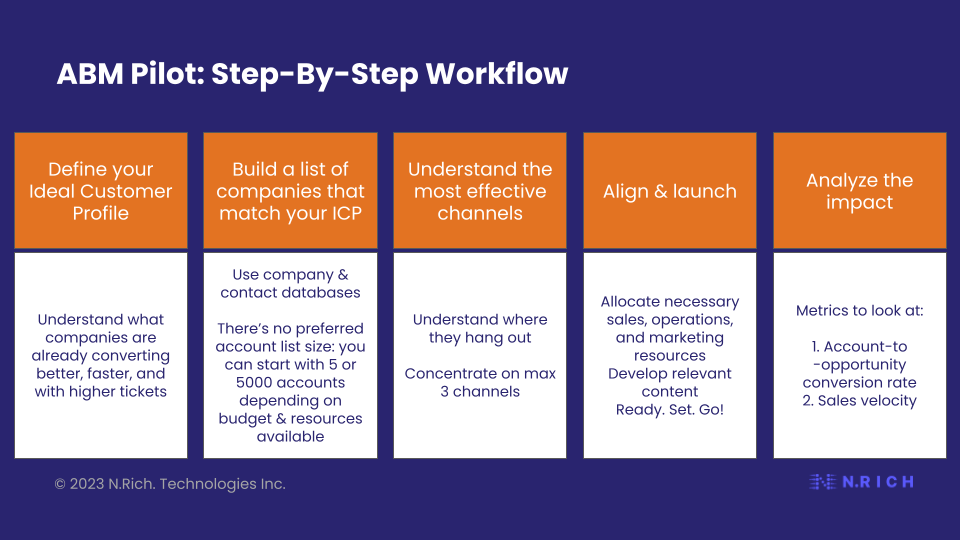
Source: Hubspot
Prioritising Accounts Through Scoring
Account scoring is a critical technique in account-based marketing tactics, helping you prioritise accounts based on their likelihood of converting into customers. Each account is given a score, determined by criteria such as fit with your target audience, budget, and their need for your products or services. This score also accounts for the decision-making timeline of the potential customer.
High-scoring accounts are your most promising prospects, and focusing on these allows you to allocate resources effectively. Rather than spreading efforts across too many accounts—many of which may not be receptive to your message—you can streamline your ABM marketing tactics towards those that are most likely to deliver successful outcomes.
Gathering Intelligence on Target Accounts
The more information you have on your target accounts, the more successful your account-based marketing tactics will be. Intelligence gathering involves researching a company’s size, industry, location, and key pain points, as well as the solutions they currently use. This deep level of understanding enables you to create hyper-targeted and effective marketing campaigns.
Additionally, part of gathering intelligence is identifying key decision-makers within the organisation. Knowing their roles and responsibilities helps you tailor your messaging to address the needs of the individuals most likely to influence buying decisions, thus improving your chances of converting the account.
Creating a Target Account List
Once you’ve gathered the necessary intelligence and prioritised your accounts through scoring, the next step is to create a target account list. This list will compile companies that you aim to focus your ABM marketing tactics on, based on factors such as organisation size, industry, location, and specific needs.
A well-defined target account list will enable you to direct your marketing efforts efficiently, prioritising the accounts most likely to result in conversions. This process ensures you allocate your resources effectively, rather than spreading them too thin across accounts that may not be receptive to your messaging.
Moreover, a target account list allows you to track your progress, measure the success of your campaigns, and refine your approach over time. The insights you gain from working with this list are invaluable for adjusting your account-based marketing tactics and continuously improving your ABM efforts.
